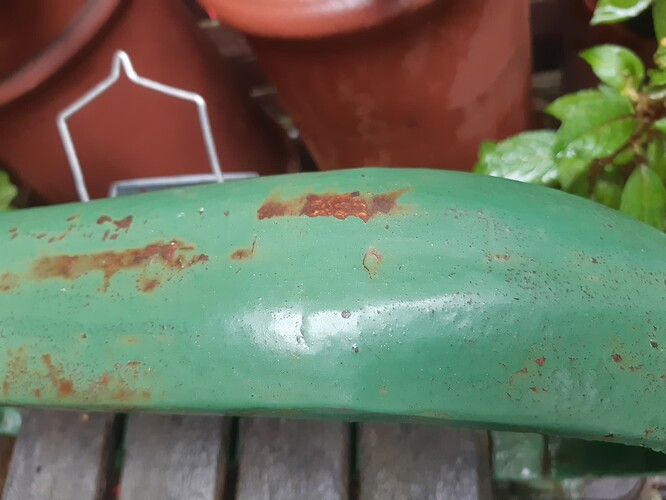Just a bit of info. I had small cracks on my exhaust manifolds. Took them to a specialty welding place today. Cracks were like 2" long and only three of them. They asked what the cost of new ones were. When I told him----he said i’d be better off to get new ones. Mine were after market ones, i believe. so much for an easy fix for these things.
Sounds like he was a pretty straight shooter. I’m not sure anyone could weld up a cast iron exhaust manifold, and have a high degree of confidence that it would last in the long-term.
Most welding shops charge somewhere around $100/hr, and he may have a 2-3 hour minimum.
I’d say he gave you good advice, and may have even saved you money in the long run.
I have a old cast iron bench , like the ones you see in the parks , when I got it one of the arms had a crack all the way around the arm , I cut a big V all around it , and I used one of them electric welders with rods , and welded it up , 30 years on it’s still good .
My dad has a Daimler Dart , that had a hole in a Exhuast manifold , he welded it up the same way .
Anything can be done , you just need to try 
The manifolds on my car were about the same and the foreman of the machine and fabrication shop I took them too gave me identical advice.
And, he was very emphatic about it.
Good advise ,would not be too bad welding a lug back onto the flanges ,but the walls I think are too thin?
Regards Gerry 62 Ots Ontario Canada.
I’ve tried welding these manifolds. Waste of time. They just fall to bits.
If I had no other option I’d braze them.
In general, it is not possible to weld common cast iron with conventional methods. This is related to the coefficient of thermal expansion combined with relatively low allowable tensile stress. Iron is very strong in compression, but it lacks elasticity. The temperature of the weld puddle causes causes tremendous thermal expansion and subsequent compression, of the surrounding metal. When the iron cools, it tries to contract back, but it lacks sufficient tensile strength, elasticity, to maintain the intergranular bonds in the iron crystalline matrix and It fractures along those lines.
When we weld components such as exhaust headers, that are able to fit into our furnace, after the weld area has been prepped, they are brought up to a cherry red heat, the weld carried out then back into the furnace and allowed to cool with it. We have 100% success with that method.
Last week a manifold from a vintage tractor was brought to us after someone else had had a go at welding it, only to have it crack worse than it was originally. They then went to brazing with no better results and now the weld area is contaminated with bronze filler.
A replacement manifold is unobtainable and so we’re now having a one off casting done at considerable cost to the client. It often seems like we are to expense to do a job first time round, but not so to fix the fuck ups of others.

Brent
And that is exactly why the company I went to said it would be cheaper to buy new ones. Their procedure was like you described.
Exactly. Not many shops have that capability. You heat it to just short of the critical temperature. The entire piece expands and contracts in a controlled manner. The differential temperature between the filler area and the surrounding metal is small, so the accompanying thermal stresses are also small. You don’t create a line of weld above the critical temperature adjacent to unheated metal. You can generally get away with that in steel, but cast iron is too brittle. About the only time I’ve seen post weld heat treatment of steel is in certain alloy steel fabrications of very thick walled, high pressure, chemical process reactors.
I successfully brazed many cast iron parts, including old pot belly stove bits.
My cylinder head guy used to weld up cast iron cylinder heads …“no problem as long as you put them in the oven and used the right rod…also…do it really quickly…”
so doable but not necessarily cost effective.
Hi Paul. When you braised them, did you do any prep work on the cast iron? I have a friend who can give it a braise try and could any advice you have
When I was a much younger man, I had a go at welding a cast iron boiler tube plate. It came in with one crack and went out with several. 
I cleaned off an area about a quarter inch in width on each side of the crack and then lightly veed the crack.
If it’s in to an area where the crack can can propagate further, I stop drilled the crack. Then, heat the object up to about 600° either in an oven, or on a coal stove – – a method I used to use a lot – – and then I used eutectic brazing rod on it in a standard fashion.
